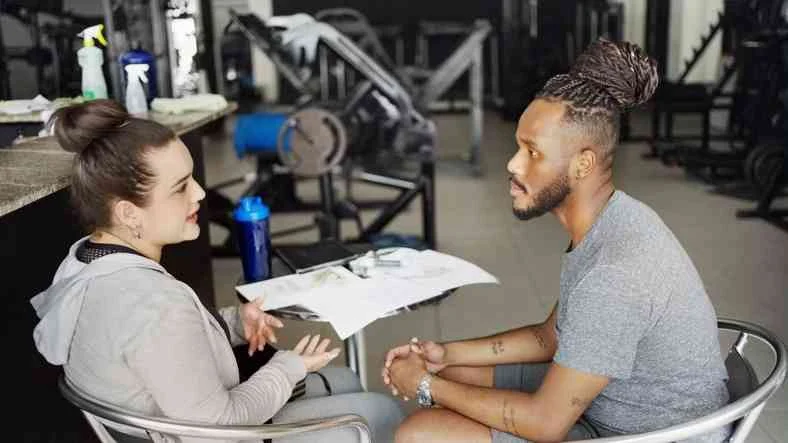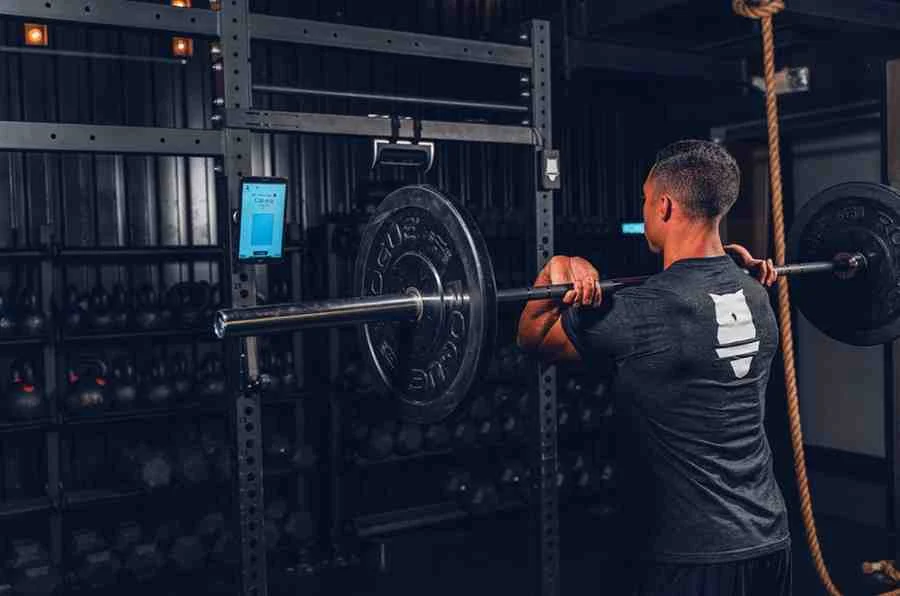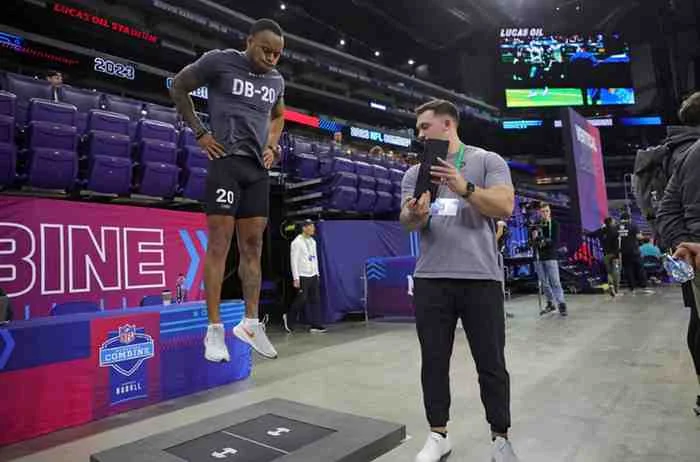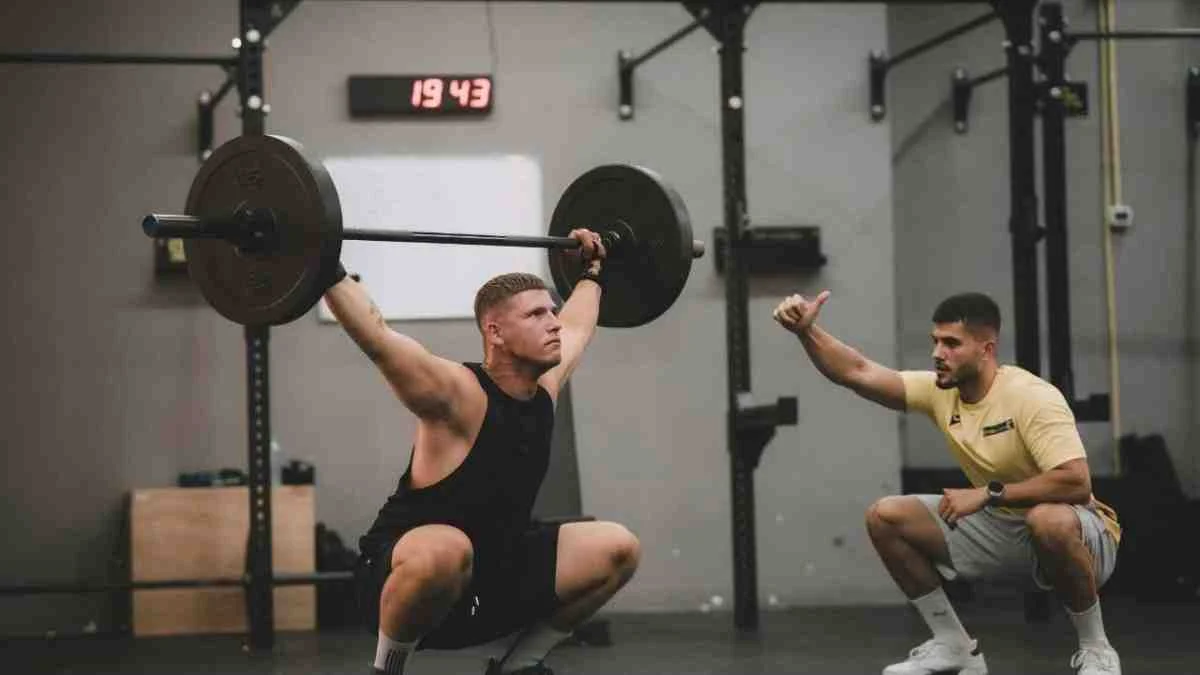[mashshare]
Medicine balls have been an important part of my training and coaching since the day I set foot at Cal State Northridge as a track athlete. Back then, we trained with medicine balls roughly two times a week, and normally there was a different theme or concept we applied each time we used them. One day, for example, would have a pressing emphasis and another day emphasized heaving, which I will provide examples of later in this article.
As the season went on, we would change the stimulus just a bit by adding 360 jumps with a pass, box jumps with a heave or press, and hurdle hops with a heave or press. As I graduated and moved on to coaching, I had an idea of why using medicine balls was effective. But, for the most part, I used them in my coaching because Coach Glenn McAtee used them, and we always had great results with very few, if any, injuries. Therefore, I programmed medicine ball training in my own plans just like Coach McAtee.
Sequential Acceleration and Maximum Force
As a young coach at 22-23 years old, I began to attend every USATF Coaches Education Course on the throws that I could. That’s where I finally came to understand the true importance of medicine ball training for athletes of all disciplines: it’s the training of summation of forces. During the education classes, Coach Larry Judge often referred to the summation of forces, which really drove home the importance of medicine ball training, or what we call multi-throws.
We all know that in every sport movement there is a proper order in which the limbs and muscles have to move to create maximum force. If these limbs and muscles do not move in the correct order, the result of whatever movement you’re trying to perform will be poor. Examples of poor summation of forces would be a baseball player swinging a bat before he plants his lead foot or a shot putter putting the shot without turning his feet and hips.
Medicine ball multi-throws train the summation of forces to develop coordination, says @nick_g_garcia. Share on XThe basic definition of the summation of forces is: when all body parts act simultaneously in practice, the strongest and lowest body parts around the center of gravity move first, followed by the weaker, lighter, and faster extremities. This is also known as sequential acceleration and results in successive force summation.
When using medicine balls, especially those with a heavier load, they continuously stress the proper order of the muscles and limbs involved in the movement. Bottom line—multi-throws with medicine balls develop coordination.
Movement Foundations
As I became more educated throughout the years, I realized that it’s not only the summation of forces that made the multi-throws a constant in my system. It also helps bridge the gap between the weight room and the field or court of play. In sports, speed kills. Although you can train with a speed emphasis in the weight room, you’re always fighting gravity with resistance training. Heavy squats, bench presses, deadlifts, and other exercises can move very slowly when the intensity is very high.
Counter the slow speed of heavy lifting by using multi-throws alongside the lifts, says @nick_g_garcia. Share on XWe can counter this by using multi-throws alongside lifting as contrast training. An example is doing a heavy clean set followed by a set of heaves for height. The medicine ball is light enough to stress constant acceleration and speed. These days you can even measure the speed of your throws by using a ball made by Bar Sensei, which has a measurement device built-in.
Multi-throw movements can be used in a ballistic manner in all three planes of movement, which also bridges the gap between the weight room and field of play. Barbells have limitations on what you can do with them. With dumbbells, you can be a bit more creative using movements like rotational high pulls and cross body 1-arm snatches. But they still limit which plane you are working in and how ballistic the movement can be.
Medicine balls are light enough to stress constant acceleration in all three planes of movement, says @nick_g_garcia. Share on XWith a medicine ball, the sky’s the limit as far as incorporating 360-degree jumps with a throw at the end and lunging in all planes followed by a throw. You can be as creative as you want with these movements, and they can be as ballistic as what occurs in your actual sport discipline.
Using medicine balls also emphasizes a concept that is huge in my system: training toenails to fingernails. When starting on the feet, heaving and pressing movements emphasize this concept. Basically it all comes back to the summation of forces and proper firing of the muscles and limbs associated with the movement you are performing. It starts at the feet and finishes when the ball leaves the fingers.
Practical Applications
So exactly how do I use medicine balls each week in our training? We emphasize heaving 90% of the time and pressing throughout the season.
Football
With football players, I often explain that heaving can be considered a defensive day because the movements are similar to tackling. A pressing day can be considered an offensive day because it emphasizes movements like stiff arms and blocking. I really like my athletes to understand why we are doing things rather than just having them do them with no idea about what they’re trying to emphasize.
Heaving
- Front Heave for Distance
- Lunge and Heave
- Heave for Height
- Back Heave for Distance
- Hammer Heave (left and right)
Pressing
- Chest Pass from Knees
- Soccer Throw
- Incline Chest Pass w/ Jump
- Shot Put (left and right)
- Jumping Chest Pass
Track and Field
When working with track and field athletes, we’ll do heaving once a week and pressing once a week—usually on a Monday and Thursday or a Tuesday and Friday. Regardless of the day, the order of the session is the following:
- Warm up followed by sprinting. Yes, we do sprint as throwers, and we even emphasize an acceleration day and max velocity day.
- Following the sprinting session, we do our individual.
- When we complete our individual event, we move on to our multi-throws and then hit the weight room.
Team Sport
When we train team sport athletes, we warm up, perform our sprinting, follow the sprinting session with our multi-throws, and then hit the weight room. I normally change the types of throws every four to six weeks, and we base the volume of throws on what we’re doing in the weight room.
Some of you may have seen me present on the traditional system I use. In that system, we have base, volume, unload, and performance weeks. A base week has six of each throwing movement, volume week has eight of each throwing movement, unload week has two of each movement, and performance week has four of each movement.
Gambetta Total Body Throws
When I feel it’s time to switch up the multi-throws, I normally move to a combination of heaving and pressing throughout the same session. We also have distinct unilateral movements. Here’s an example that I call Gambetta Total Body Throws or GTB.
- Single Leg Heave for Height (RDL to a Heave)
- Single Leg Squat and Throw (like an RDL to a Jerk)
- Heave for Height
- Squat and Throw (like a Jerk)
GTB takes place on both days of multi-throws during the week, and depending on the season, are rotated in and out every four to six weeks with heaving and pressing. As we start to get to the end of the season, I begin to incorporate throws with hurdle hops, box jumps, and 360-degree jumps. I use the single leg heave for height and the single leg squat and throw for specific ballistic hamstring work during a weight room session.
End of Season Multi-Throws
During the end of the season, we again base the volume on what we’re doing in the weight room, and a typical multi-throws session looks like this:
- Front Heave for Distance
- Back Heave for Distance
- 360 Chest Pass (right and left)
- Over 2 Boxes Front Heave
- Over 2 Hurdles Back Heave
Core Work
Toward the end of the season, we begin to incorporate medicine balls in our core work during a weight room session. We want to be fast and explosive at the end of the season, so everything we do emphasizes speed and explosion. The best way to do this for the core is to use medicine balls. Once again, they are light enough to stress constant acceleration and can be used in all three planes of movement.
The best way to emphasize speed and explosion for the core is to use medicine balls, says @nick_g_garcia. Share on XI mentioned above that our single leg work that emphasizes the hamstring moves to medicine ball heaves and presses to be ballistic as possible. I say “emphasizing the hamstring” because as athletes we should not be training a single muscle by itself—we need to be training movements. Here is what a core workout may look like using medicine balls.
Gambetta Wall Series for the Core
- Soccer Throw
- Chest Pass
- Down the Side (right and left sides done by themselves)
- Cross in Front (right and left sides alternate like forehands and backhands)
The size and weight of the medicine balls depend on how strong the athletes are, although we tend to stick with 2k-4k for women and 3k-5k for men. Remember the goal when using multi-throws is speed, and a medicine ball that’s too heavy will defeat the purpose. Occasionally we will substitute a medicine ball heave or press for an Olympic Lift during a cycle. At this point, it may be okay to go a little heavier than normal with the ball, but never sacrifice technique for weight.
Closing Thoughts
It’s clear medicine ball multi-throws can be used in a variety of ways and are very effective. They’re not the end all-be all of training, but they can be a very effective tool in your training toolbox to create an end all-be all system that you make your own. You can see more of the types of medicine ball movements we use at hmmrmedia.com. My email is [email protected] if you have any questions.
Since you’re here…
…we have a small favor to ask. More people are reading SimpliFaster than ever, and each week we bring you compelling content from coaches, sport scientists, and physiotherapists who are devoted to building better athletes. Please take a moment to share the articles on social media, engage the authors with questions and comments below, and link to articles when appropriate if you have a blog or participate on forums of related topics. — SF
[mashshare]




